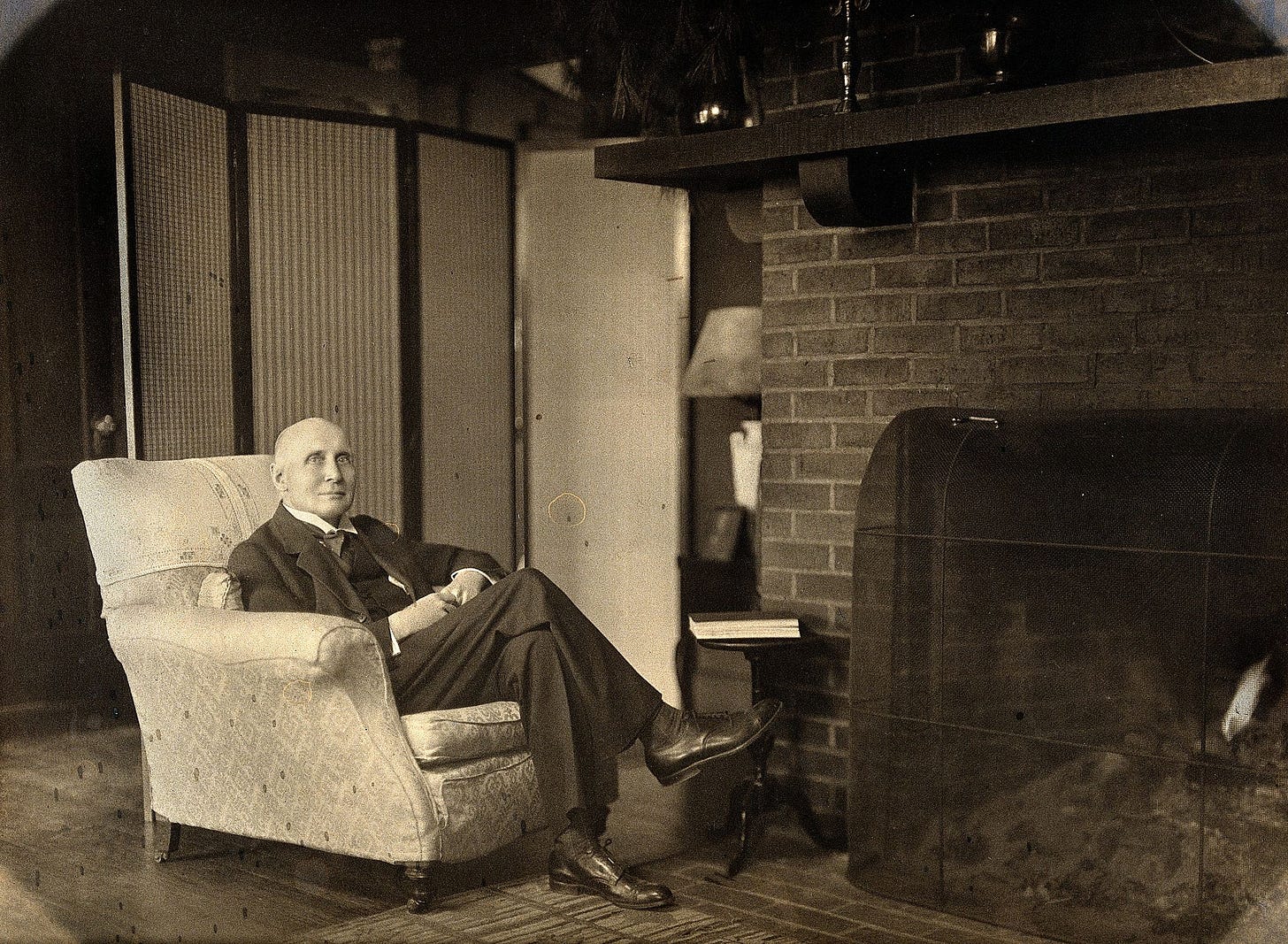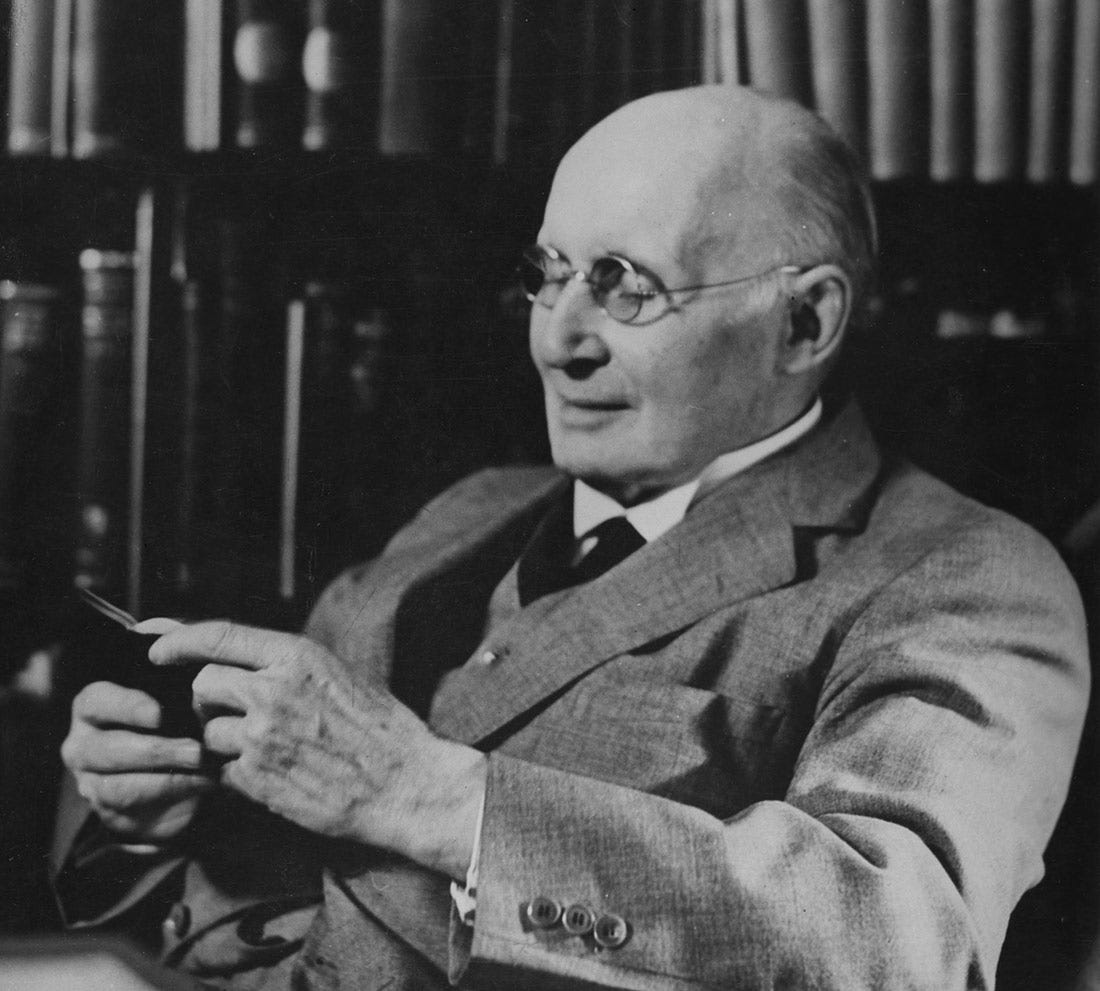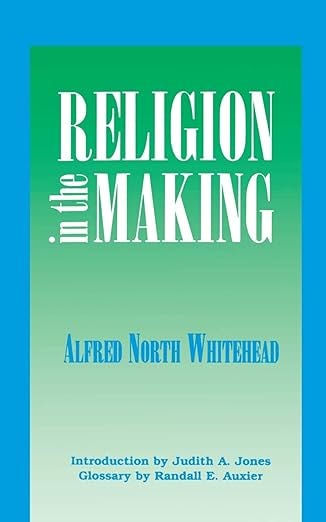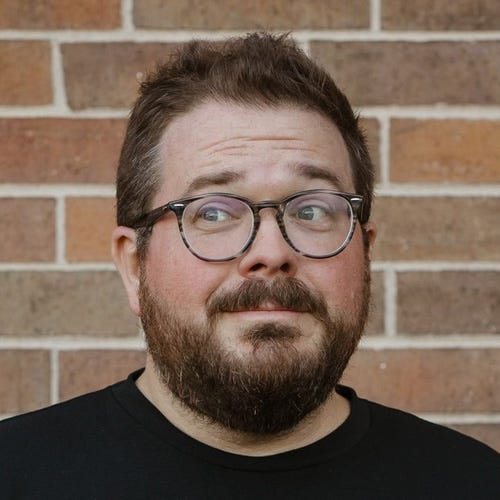Finding Our Way Forward in a Post-Religious Age
How Whitehead Shows Us Religion as Life’s Creative Force
SUPPORTING MEMBERS: CLICK HERE to Access the Reading Group Resource Page with the Zoom link and replay videos.
Friends, let me share something that’s been stirring in my heart. We’re living through extraordinary times—times of both unprecedented possibility and profound crisis. Our smartphones connect us instantly across continents, yet loneliness is epidemic. We’ve unlocked the secrets of the genome, yet we’re destroying the very ecosystems that sustain life. We have more information than ever, but less wisdom about how to live well together on this precious planet.
This is where Alfred North Whitehead—a mathematician-turned-philosopher who lived through the upheavals of the early 20th century—offers us something vital. He saw that what we call “religion” isn’t just about beliefs or institutions. It’s about something much deeper: the creative force that helps goodness and beauty emerge in the world. And here’s the remarkable thing—his vision speaks powerfully to those of us living in what many call a “post-religious” age.
Let me walk you through three interconnected insights that could transform how we see our collective path forward.
1. Value Is Woven Into the Fabric of Reality
First, Whitehead invites us to see that goodness, beauty, and meaning aren’t just human inventions. They’re woven into the very fabric of reality. Every moment—from a child’s laughter to a sunset’s glow—carries intrinsic worth.
Whitehead describes this through what he calls the divine presence in all things. Now, before you picture an old man in the sky, let me clarify: Whitehead’s understanding of the divine is radically different. Think of it more like a creative energy that runs through everything, constantly inviting the world toward greater harmony and intensity of experience. This divine reality works not through force but through what Whitehead beautifully calls “the lure of feeling”—a gentle pull toward truth, beauty, and goodness.
Listen to how Whitehead himself puts it: “God’s role is not the combat of productive force with productive force, of destructive force with destructive force; it lies in the patient operation of the overpowering rationality of his conceptual harmonization. He does not create the world, he saves it: or, more accurately, he is the poet of the world, with tender patience, leading by his vision of truth, beauty and goodness.”
Isn’t that beautiful? God as poet, not warrior. God saving rather than controlling. This changes everything about how we understand divine action in the world.
Imagine reality as a vast symphony where each note matters, where the divine is like the underlying rhythm inviting each instrument to play its part in creating something magnificent. This isn’t about believing the right things; it’s about recognizing that we live in a universe where value and meaning are as real as atoms and galaxies.
Here’s where it gets even more remarkable. As theologian Thomas Hosinski explains: “God is the infinite and eternal ground of possibility, order, value and novelty that is necessary for there to be any actual course of events, any universe, at all. This aspect of God makes the universe possible, but... [it] is an eternal vision of merely possible beauty and value. The actual agents of the universe, finite, temporal, and passing, incorporate this aspect of God in receiving their aims, their creativity and freedom, and their possibilities. In turn, these agents of the universe give God something God cannot otherwise acquire: actualized beauty and value.”
Think about that—we’re not just passive recipients of divine goodness. We’re active partners in bringing beauty and value into being. Every act of kindness, every creative endeavor, every moment of genuine connection adds something to the universe that wouldn’t exist without us.
2. Religion as the Bridge Between Vision and Action
But here’s where it gets practical. If ultimate values exist, how do they actually change anything? How do they move from abstract ideals to lived reality in our neighborhoods, our politics, our daily choices?
This is where Whitehead’s expanded understanding of religion becomes crucial. Religion, he suggests, isn’t fundamentally about doctrines or denominations. It’s about the human capacity to connect our deepest feelings with our highest ideals. It’s the bridge between what we know in our heads and what moves us in our hearts.
Think about the civil rights movement. The ideal of human equality was philosophically established, but it took the religious imagination—the songs, the dreams, the beloved community—to transform that ideal into a movement that changed history. Or consider the climate movement today, where young people aren’t just citing scientific data but are channeling deep moral passion about our responsibility to future generations.
Whitehead saw that real transformation requires moving beyond narrow self-interest. It’s not enough to ask “What’s in it for me?” We need what he called “world-loyalty”—a recognition that our individual wellbeing is inseparable from the wellbeing of the whole. This isn’t about losing ourselves but about finding our truest selves in connection with the larger story of life.
In our post-religious age, this function of religion—this bridge-building between vision and passion—is happening in new forms: in social movements, in artistic communities, in networks of mutual aid, in groups gathering to imagine regenerative economies. The forms change, but the deep human need remains.
3. The Revolution of Persuasion Over Force
This brings us to perhaps Whitehead’s most radical insight: genuine progress happens not through coercion but through what he calls “the victory of persuasion over force.” This isn’t naive optimism; it’s based on a profound understanding of how reality actually works.
Whitehead distinguished between two types of power:
Domination power works through control, through making others conform to our will. It’s the power of empires, of “might makes right,” of relationships based on manipulation rather than mutuality. This power might win battles, but it ultimately diminishes life.
Relational power works through connection, through being affected by others and affecting them in return. It’s the power of a parent’s love that helps a child flourish, of a teacher who sees potential and calls it forth, of movements that inspire rather than impose change. This power increases freedom and possibility.
Think about how the greatest moral advances in human history have unfolded. The abolition of slavery, the expansion of human rights, the growing recognition of our kinship with all life—these didn’t ultimately succeed through force but through the slow, patient work of changing hearts and minds. As Whitehead put it, they acted as “gadflies irritating and beacons luring” humanity toward a larger vision.
This is especially relevant to our current crises. We won’t solve climate change just through regulations (though those matter). We need a transformation of consciousness, a new story about who we are and how we belong to the web of life. We won’t heal our divided societies through domination by one group over another but through discovering deeper sources of connection across our differences.
And here’s what gives me hope: Whitehead assures us that nothing we do in love is ever lost. He writes: “The image...under which this operative growth of God’s nature is best conceived, is that of a tender care that nothing be lost. The consequent nature of God is his judgment on the world. He saves the world as it passes into the immediacy of his own life. It is a judgment of a tenderness which loses nothing that can be saved. It is also the judgment of a wisdom which uses what in the temporal world is mere wreckage...Another image which is also required to understand his consequent nature is that of his infinite patience...tenderly saving the turmoil of the intermediate world by the completion of his own nature.”
Every act of compassion, every stand for justice, every gesture of reconciliation—none of it is wasted. It all becomes part of the ongoing story of the universe moving toward wholeness.
The Path Forward
So what does this mean for us, living in this pivotal moment?
First, it means recognizing that the work of “religion” in Whitehead’s expanded sense—the work of connecting ultimate values with passionate commitment—is desperately needed, whether or not we use traditional religious language or institutions.
Second, it means trusting that the universe has a divine companion that meets the world and each of its creatures with an invitation to collaboration. We’re not pushing a boulder uphill alone; we’re cooperating with the creative energy that permeates all things, shares all things, and calls forth from what is to what could be.
Third, it means choosing persuasion over force in our own lives and communities. Every time we inspire rather than impose, every time we build bridges rather than walls, every time we expand our circle of care, we’re participating in this larger movement of life toward greater wholeness.
Friends, Whitehead shows us that what humanity has traditionally called “religion” names something essential: our capacity to be moved by beauty, to be called by goodness, to work together in bringing more life and love into the world. In our post-religious age, we need this capacity more than ever—not as dogma to be defended but as a creative force to be channeled toward the healing of our world.
The question isn’t whether we believe the right things. The question is whether we’ll let ourselves be caught up in this larger movement of love, whether we’ll add our voices to the symphony of creation, whether we’ll choose the harder but more beautiful path of persuasion over force.
The universe is a story of invitation in which we find ourselves, the fruit of a tenacious and tender heartbeat. How will we respond?
Join the “From Ritual to Reason and Beyond” Reading Group! (For Supporting Members Only)
If this vision of religion as a creative force for transformation resonates with you, consider participating in our upcoming online reading group for Substack supporting members…
From Ritual to Reason and Beyond: The Evolution of Religious Experience in Whitehead
A Five-Week Online Reading Group
Starting Monday, October 27th at 9am PT / 12noon ET
We’ll spend five weeks exploring Whitehead’s Religion in the Making together. I will be joined by my friend and process philosopher Dr. Andrew Davis. This leisurely, discussion-based journey will help us understand how Whitehead’s insights speak to our post-religious moment.
Dr. Andrew Davis, American process philosopher, theologian, and scholar of the cosmos, will be joining me for this reading group. He is the academic and research director for the Center for Process Studies, where he researches, writes, teaches, and organizes conferences on various aspects of process-relational thought. I am thrilled to have him join us!
By becoming a supporting member of the Process This Substack (if you’re not already), you will receive:
Access to join each session live on Zoom (link down below).
Recordings of all five sessions for flexible viewing.
The opportunity to participate in rich conversation around the text with fellow readers and two experienced guides in process theology.
Whether you’re curious about process theology, seeking a rational approach to faith, or simply want to grapple with one of the 20th century’s most original philosophical minds, this reading group offers a welcoming space for deep conversation.
Come prepared with your questions, insights, and favorite passages. Let’s think together about what religion is becoming—and what it might yet become.
SUPPORTING MEMBERS: CLICK HERE to Access the Reading Group Resource Page with the Zoom link and replay videos.









Tripp, this post of yours is a marvelous, cohesive, & coherent overview of the major points. Thank you!
This is a marvelous synthesis of process thought via Whitehead.